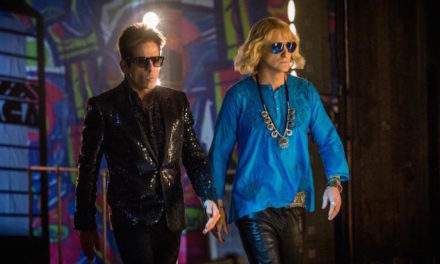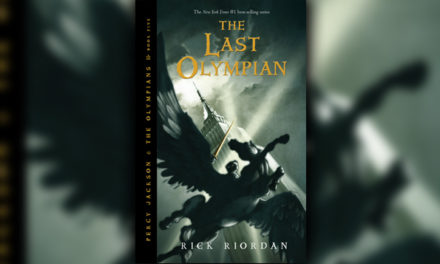
Courtesy of Roadside Attractions /IMDB
In recent years, biopics and historical films have captured the public’s attention. The genre seems like a no-brainer: an exciting historical event should make for an exciting film, and an interesting historical figure should make for a compelling character. However, even with all the right historical ingredients, a film can still be overcooked. “The Warrior Queen of Jhansi” proves that a great historical figure is not always enough to carry a film.
“The Warrior Queen of Jhansi” depicts the Indian Rebellion of 1857 against the British East India Company. It focuses on Lakshmibai (Devika Bhise), Rani (queen) of Jhansi and a hero who fights against British colonialism. When the British East India Company declares that they will not recognize Lakshmibai’s son as a legitimate heir to the Jhansi throne, Lakshmibai refuses to back down and spearheads the fight for independence.
Women’s empowerment and anti-colonialism are major themes in “The Warrior Queen of Jhansi.” To its credit, the film seems to genuinely believe in the importance of this discussion of these issues, and there are a few somewhat inspiring, substantive moments, like when Lakshmibai passionately engages in battle. However, as much as I would normally enjoy seeing these themes handled in films, it is vitally important that they are handled with nuance and subtlety. The film is woefully heavy-handed, to the point where it undermines the message it is trying to send. To convey the themes, the characters engage in forced conversations. Early in the film, Lakshmibai asks her son, “What makes a prince?” to which he replies, “My actions.” The dialogue only gets cheesier from there, as Lakshmibai continues to teach her son lessons through books and makes on-the-nose chess metaphors. (At one point, Lakshmibai makes a move in chess and explains it afterwards; shortly after, she uses the same move in battle, and another character repeats the same explanation verbatim.)
It seems as though no one working on this film has ever heard of the adage, “Show, don’t tell.” “The Warrior Queen of Jhansi” seems to have little faith in the audience’s ability to understand the high-quality implicit arguments and subversion of the colonial gaze that already exist within the film and do not require an explanation. After seeing the British repeatedly brutalize and exploit Indians, the audience doesn’t need to be told several times that the British are cruel. After seeing Lakshmibai single-handedly fight off several gun-bearing British soldiers with nothing but a sword, the audience doesn’t need to hear an officer whisper, “She’s like Joan of Arc,” to understand that she is a great warrior. And after hearing three of the same recycled inspiring battle speeches within just 20 minutes, any inspirational effect the words could have dwindle through exhaustion. The film’s tendency to verbally explain everything makes it seem like the target audience is children, which cannot possibly be the case with the copious graphic imagery and violence.
About halfway through the film, one British officer describes Lakshmibai to another: “She’s not a woman, she’s an idea.” This statement holds true, not just within the world of the film but in how the film itself treats the character. She doesn’t seem like a woman or even a human being at all. This problem isn’t created by Bhise, whose performance is decent, but it instead can be ascribed to the limits of the script. Lakshmibai is kind, brave, just, open-minded and intelligent. She never once wavers from this perfection, thereby never giving Bhise a chance to explore any internal conflict that makes us love and respect films’ heroes. Lakshmibai is too one-dimensional to be interesting and far too flawless to seem real.
The film industry often gives South Asian women poor representation. Female South Asian characters are often flat and stereotypical, either passive and submissive, such as in “The Big Sick,” or in this case, assertive but shallow. “The Warrior Queen of Jhansi” had an opportunity to break away from this trend, making Lakshmibai’s lack of complexity particularly disappointing. The other South Asian women receive even worse representation and treatment, as they are portrayed as little more than objects on screen. One woman, deemed an untouchable by the society’s caste system, exists seemingly only to allow Lakshmibai to declare that they are “not so different.” The woman receives no characterization of her own. Worse yet, another woman, who does not even get a name, appears later in the film for no other reason than to be raped by a British soldier. For a film that claims to be a story of women’s empowerment, this treatment of female characters is dismal. If anything, “The Warrior Queen of Jhansi” only contributes to an already serious problem in Hollywood’s treatment of South Asian women.
The other characters in the film suffer from this same treatment. If they’re not perfect, then they’re evil. Occasionally, the movie will depict someone who is neither, but in those cases, they’re not really characters so much as subjects of either Lakshmibai’s perfection or the British soldiers’ evil. This causes every character in the movie to fall flat. Each one lacks the vitality necessary for an action-packed film that espouses social commentary about the humanity that colonialism robs its victims of. An idealized caricature is still a caricature.
The only positive thing that can be said about “The Warrior Queen of Jhansi” is that the score is beautiful and emotionally moving, even if the film overly relies on it to hit the emotional beats that the script and acting cannot do themselves. “The Warrior Queen of Jhansi” does not provide any new insight or nuance into the issues it portrays, or to Lakshmibai herself. Overall, the film is half-baked and graceless. The real Rani Lakshmibai deserves a better movie.
Grade: D+





